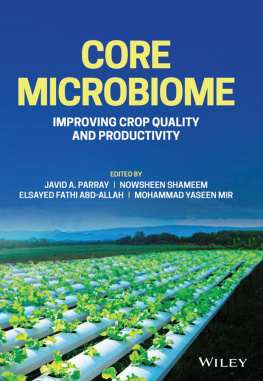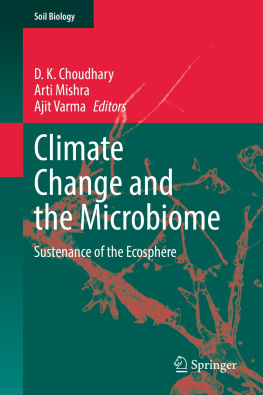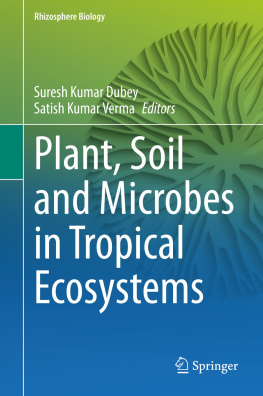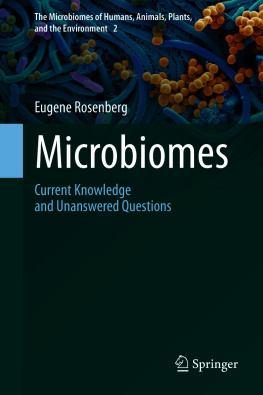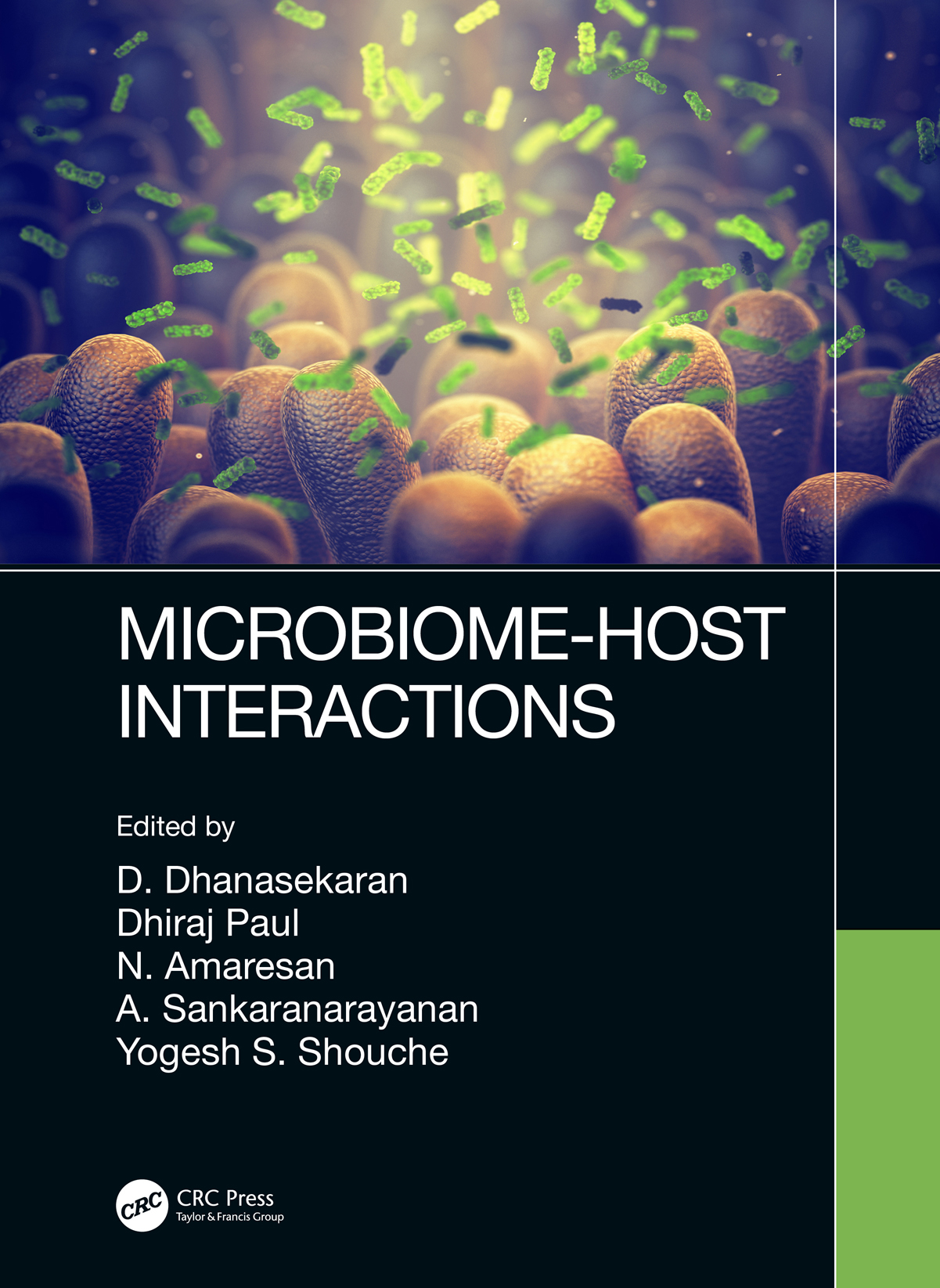
Microbiome-Host Interactions
Microbiome-Host Interactions
Edited by
D. Dhanasekaran
Dhiraj Paul
N. Amaresan
A. Sankaranarayanan
Yogesh S. Shouche

First edition published 2021
by CRC Press
6000 Broken Sound Parkway NW, Suite 300, Boca Raton, FL 33487-2742
and by CRC Press
2 Park Square, Milton Park, Abingdon, Oxon, OX14 4RN
2021 Taylor & Francis Group, LLC
CRC Press is an imprint of Taylor & Francis Group, LLC
Reasonable efforts have been made to publish reliable data and information, but the author and publisher cannot assume responsibility for the validity of all materials or the consequences of their use. The authors and publishers have attempted to trace the copyright holders of all material reproduced in this publication and apologize to copyright holders if permission to publish in this form has not been obtained. If any copyright material has not been acknowledged please write and let us know so we may rectify in any future reprint.
Except as permitted under U.S. Copyright Law, no part of this book may be reprinted, reproduced, transmitted, or utilized in any form by any electronic, mechanical, or other means, now known or hereafter invented, including photocopying, microfilming, and recording, or in any information storage or retrieval system, without written permission from the publishers.
For permission to photocopy or use material electronically from this work, access
Trademark notice:Product or corporate names may be trademarks or registered trademarks, and are used only for identification and explanation without intent to infringe.
Library of Congress Cataloging.in.Publication Data
Names: Dhanasekaran, Dharumadurai, editor. | Paul, Dhiraj, editor. | Amaresan, N., editor. | Sankaranarayanan, A., editor. | Shouche, Yogesh, editor.
Title: Microbiome-host interactions / edited by D. Dhanasekaran, Dhiraj Paul, N. Amaresan, A. Sankaranarayanan, Yogesh Shouche.
Description: First edition. | Boca Raton : CRC Press, 2021. | Includes bibliographical references and index.
Identifiers: LCCN 2020044928 | ISBN 9780367479909 (hardback) | ISBN 9781003037521 (ebook)
Subjects: LCSH: Microbial ecology. | MicroorganismsBehavior.
Classification: LCC QR100 .M5315 2021 | DDC 579/.17dc23
LC record available at https://lccn.loc.gov/2020044928
ISBN: 978-0-367-47990-9 (hbk)
ISBN: 978-0-367-47990-9 (pbk)
ISBN: 978-1-003-0375211 (ebk)
Typeset in times
by codeMantra
Contents
T. Savitha, A. Sankaranarayanan, and Ashraf Y. Z. Khalifa
Sushant Parab and Federico Bussolino
Dattatray S. Mongad, Nikeeta S. Chavan, and Yogesh S. Shouche
Murali Sankar Perumal and Shreedevasena Sakthibalan
Priyanka Sarkar
Shanmugaraj Gowrishankar, Arumugam Kamaladevi, and Shunmugiah Karutha Pandian
Sunil Banskar and Shrikant Bhute
Sahabram Dewala and Yogesh S. Shouche
Nazar Reehana, Mohamed Yousuff Mohamed Imran, Nooruddin Thajuddin, and D. Dhanasekaran
Rafael Resende Maldonado, Ana Lcia Alves Caram, Daniela Soares de Oliveira, Eliana Setsuko Kamimura, Mnica Roberta Mazalli, and Elizama Aguiar-Oliveira
Mitesh Dwivedi, Firdosh Shah, and Prashant S. Giri
Diana R. Cundell and Manuela Tripepi
C. Anchana Devi, T. Ramani Devi, and Pavithra Amritkumar
A.A.P. Milton, G. Bhuvana Priya, M. Angappan, S. Ghatak, and Vivek Joshi
R. Vikram, Vivek Joshi, A. A. P. Milton, M. H. Khan, and K. P. Biam
Selvanathan Latha and D. Dhanasekaran
Arun Kumar, Somarani Dash, and Mojibur R. Khan
M. Srinivasan, J. Helan Chandra, M.S. Murugan, C. Manikkaraja, D. Dhanasekaran, and G. Archunan
Ekramul Islam and Kiron Bhakat
Snehal O. Kulkarni and Yogesh S. Shouche
Ahmed Abdul Haleem Khan
Narayanasamy Marappa, D. Dhanasekaran, and Thajuddin Nooruddin
S. Kalaiselvi and A. Panneerselvam
D. Mudgil
Raju Rajasabapathy, Chellandi Mohandass, Ana Colao, and Rathinam Arthur James
B. Abirami, K. Manigundan, M. Radhakrishnan, V. Gopikrishnan, P.V. Bhaskar, T. Shanmugasundaram, and Syed G. Dastager
Sandhya Nanjani and Haresh Kumar Keharia
Govindan Nadar Rajivgandhi, R.T.V. Vimala, Govindan Ramachandran, Natesan Manoharan, and Wen Jun-Li

| UNIVERSIDADE ESTADUAL DE CAMPINAS
COLGIO TCNICO DE CAMPINAS COTUCA
Rua Jorge de Figueiredo Correa, 735 Parque Taquaral Campinas / SP CEP: 13.087-261 Caixa Postal 6139
Fone: (19) 3521-9904 CNPJ: 46.068.425/0001-33 www.cotuca.unicamp.br | 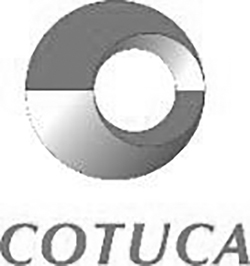 |

The term microbiome has become more and more frequent in the everyday world of academic research, and it is also increasingly becoming known to the general public. The main reason for the popularity of this terminology is certainly associated with the numerous discoveries relating it to health and well-being. Studies of the human microbiome reveal that the microorganisms that develop in our body, especially in the intestine, have a systemic effect on our entire organism, that is, our microbial population affects positively or negatively all the organs and systems of our body. Since these microorganisms are present in almost all parts of our body, they are decisive for the establishment of health and well-being or the development of diseases.
Much is already known about the effects of the microbiome in the prevention or prevalence of chronic nontransmissible diseases, such as diabetes, obesity, cancer, cardiovascular diseases among others. In addition, there is also a growing interest in knowing the effects of microbial populations on the development of other animals, plants and the environmental balance of the planet, as the discoveries and applications appear to be almost inexhaustible.
Given the importance and breadth of the theme, this book provides a broad and multidisciplinary overview of the most recent issues related to different microbiomes. It presents the specificities, and the most current topics of this theme applied to human beings, other animals, plants, the environment and it also presents and discusses the newest and most advanced microbial analysis and characterisation techniques.
I am sure that this book is an important contribution to compile, enlighten and deepen the discussions about the different microbiomes and their roles in building a more sustainable world and a healthier life. I congratulate the editorial team and all the researchers who worked conjointly to elaborate such a wide and high-quality work, which contributes greatly to the discussions in this important area of scientific knowledge.
 Prof.Dr.Rafael Resende MaldonadoFood Department, Technical College of CampinasUniversity of CampinasNext page
Prof.Dr.Rafael Resende MaldonadoFood Department, Technical College of CampinasUniversity of CampinasNext page

